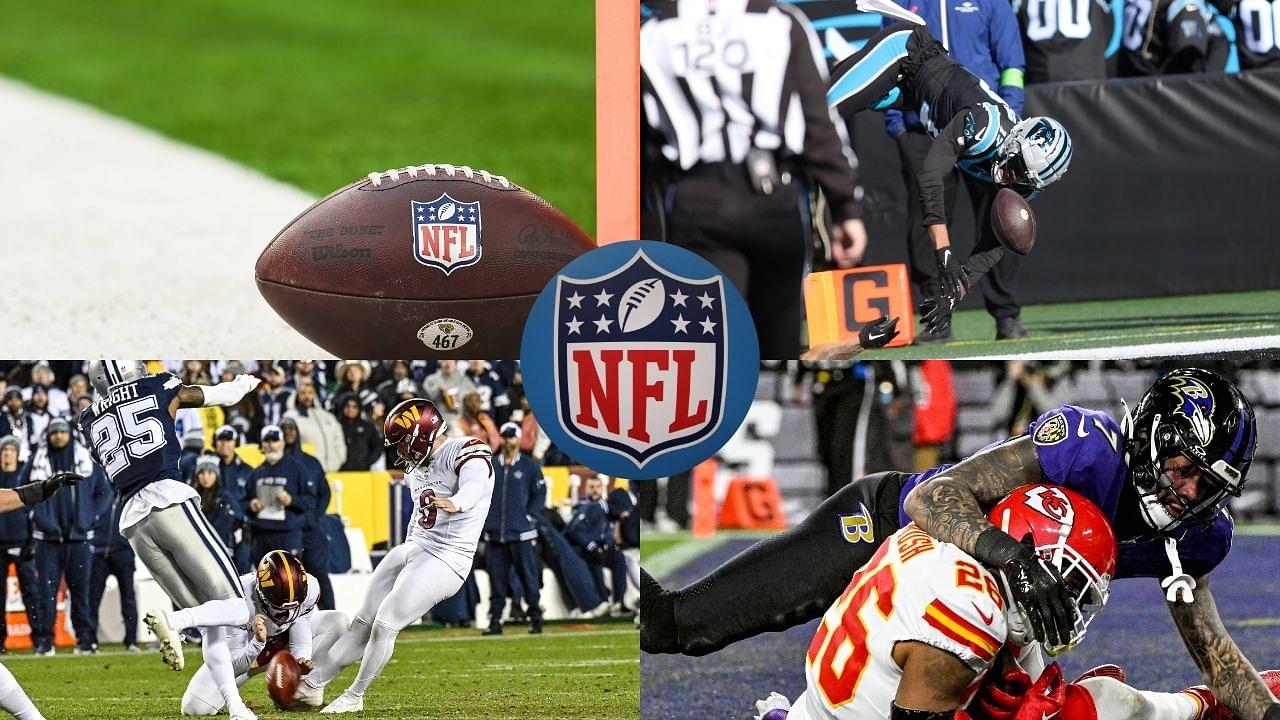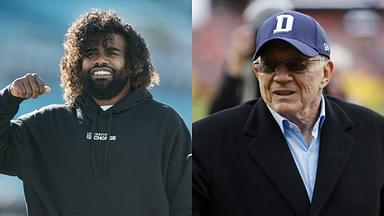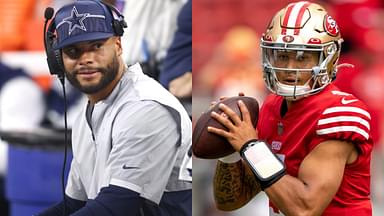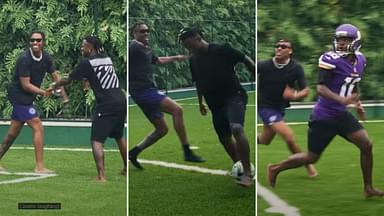American Football, or as it is known around the world, the NFL, and its players’ global popularity has been rising undeniably. All thanks to the combination of extensive media coverage and strategic efforts by the league to captivate international audiences. Broadcasting networks and streaming platforms are broadcasting live games. Social media platforms are providing real-time updates and exclusive behind-the-scenes content. The NFL is becoming regular with its International Series.
Advertisement
All these efforts have contributed to fostering a global community that is united by a shared passion for the sport. As the league continues to expand its international reach, new fans are wanting to learn more about the NFL terminologies. The fans can dive into this article to understand the intricacies of the NFL in a better way. For starters, take a look at this:
Now, we will discuss each of these terminologies in detail to provide you with a comprehensive understanding.
End Zone
The End Zone is the sacred sanctum of American Football — it’s where the magic of scoring takes place. End Zone is the area at each end of the field, marked by goal lines and end lines, where a player must carry or catch the ball to score a touchdown. In the NFL, an end zone measures 10 yards by 53 1/3 yards long.
Whenever the teams switch sides in a game, they also change the end zones they are defending. It has been a fundamental part of American football since the 1912s when it was introduced to set the sport apart from others.
Touchdown
The most thrilling moment in the NFL is a touchdown. It is the scoring play that has teams racing towards the opponent’s end zone. The strategies that help teams achieve a touchdown are running, passing, returning kicks, or turnovers. Moreover, the ball doesn’t need to be “touched down” on the ground, as the name suggests, it has to cross the vertical line beyond the goal line.
It’s all about holding possession and being in control of the ball when it crosses the line — a body part doesn’t need to be on the other side of the line. The entire excitement that makes the crowd go wild is when teams inch closer to the end zone with their game plans. A touchdown earns a team six points, it is then followed by the possibility of an extra point ‘field goal’ or a two-point conversion.
Field Goal
A field goal in the NFL is a scoring play that comes into action when the offensive team successfully kicks the ball through the goalposts and over the crossbar. Unlike a touchdown, which requires a lot of game plans to cross the goal line, a field goal only requires a simple kick from the line of scrimmage. The attempt can be from anywhere on the field and is worth three points upon success.
Teams often opt for a field goal attempt on fourth down when scoring a touchdown is uncertain. If the team opts for a field goal attempt after a successful touchdown, it’s worth one extra point, as discussed earlier.
Kick-off
Kick Off is basically the launching pad that starts the showdown between two teams vying for supremacy. The kick-off takes place at the start of each half, overtime, and after a scoring play. The ball is lined at the defending team’s 35-yard line and they launch the ball toward the receiving team’s end zone.
The strategic methods for the kick-off include the onside kick, touchback, and fair catch. The onside kick is when a team attempts to recover the ball after the kick-off. To ensure an onside kick, a team must ensure it travels at least 10 yards. However, if the ball doesn’t meet this requirement, the receiving team can easily recover it without facing any penalties.
A touchback occurs when the ball enters the receiving team’s end zone without being returned. The receiving team then starts the play at their 20 or 25-yard line, depending on the situation. Last but not least, a fair catch is when a receiving team player catches the ball perfectly and, to avoid a tackle, the player waves one arm above their head.
Downs
A down, in American football is a segment of play where a team tries to advance the ball 10 yards or more toward the opponent’s goal line. The team that has the possession of the ball is given four chances, usually written as 1st/2nd/3rd/4th down and the second half is for the yardage. If they are not able to advance at least 10 yards or more, depending on penalty, during these 4 downs, the possession is turned over.
Now, for example, “1st and 10” signifies the first attempt to gain 10 yards, while “2nd and 3” indicates the second try for 3 yards.
Interception
An interception is a play that can completely flip the script of a game in the fast-paced world of the NFL. It happens when a defensive player manages to catch a forward or lateral pass from an offensive player, resulting in a turnover and a change in possession. This is where the defensive backs show their skills, as their anticipation needs to be in perfect harmony with the opponent quarterback’s throw.
Now, a player needs to have both feet touching the ground in bounds to successfully intercept a pass. He also has to ensure he maintains control of the ball till his feet touch the ground.
Fumble
A fumble is when a player with the ball in hand and under control, loses it in any way other than through passing, kicking, punting, or a successful handoff. It not only happens when an offensive player loses control of the ball and drops it, but a defensive player can also cause a fumble by grabbing, punching, or even butting the ball out of the offensive player’s hands.
Once the ball is dropped, either team can recover and gain possession. However, if a player loses control of the ball after hitting the ground following a tackle, it is not considered a fumble. Moreover, if the ball goes out of bounds in the end zone, it is a touchback.
Hail Mary – NFL
Hail Mary is a lengthy forward pass, and to be accurate, it is often made in desperation with a low chance of completion. This kind of play is employed when a team is trailing with limited time and is eyeing a touchdown; however, the team’s position is not considered a scoring position. In short, a successful Hail Mary pass can create an iconic moment destined to be a part of NFL history.
As a matter of fact, the term Hail Mary came from a game in 1975 between the Dallas Cowboys and the Minnesota Vikings. When quarterback Roger Staubach threw a last-second touchdown pass to Drew Pearson and famously described it as closing his eyes and saying a “Hail Mary.”
Sack
A sack takes place when an offensive player acting as a passer, mostly the quarterback of the team, is tackled behind the line of scrimmage by a defensive player. It typically happens when a team’s defense puts a lot of pressure on the offensive line that their quarterback cannot even make a timely throw.
If a quarterback drops the ball when he is sacked, it is known as a strip sack. The defense can pick the ball up and make a run toward the offensive team’s end zone. Interestingly, a sack can result in a safety for the opposing team (worth 2 points) if the quarterback is sacked in his own end zone.
Tackle
A tackle is a very crucial defensive move in the NFL. It is a moment of pure strategy and athleticism, where a defensive player makes physical contact with the ball carrier, bringing him to the ground or forcing the player out of bounds. A good tackle can result in a fumble or a turnover that gives the defense a chance to gain possession.
Tackles are tracked and recorded as official statistics for defensive players and are even a key indicator of a defensive player’s performance. Mostly, it’s the linebackers and secondaries who are responsible for executing tackles. The solo tackles are credited to the player who single-handedly brings down another player, while assisted tackles are awarded when multiple defenders collaborate on the play.







